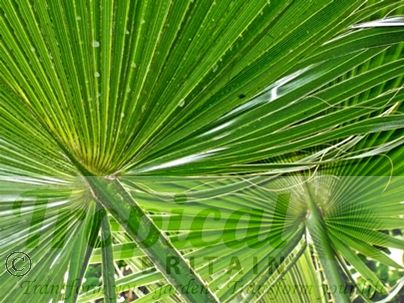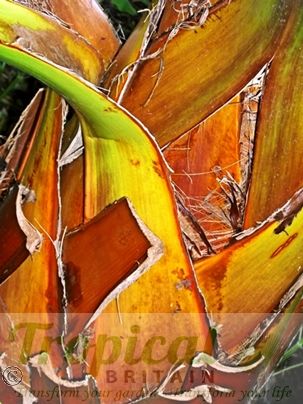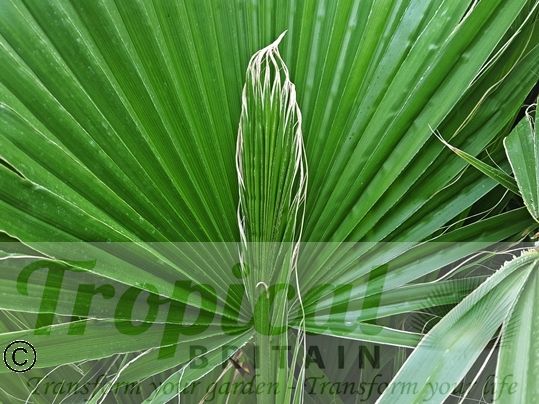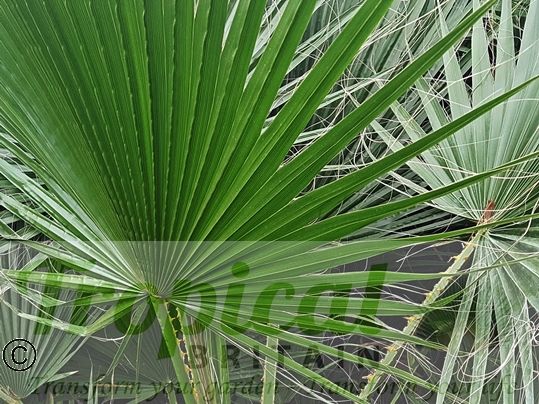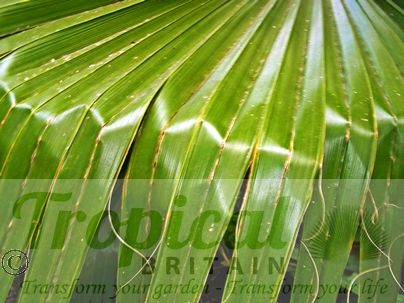Washingtonia filifera, the California Fan Palm, is rather rare in the wild and occurs in isolated pockets in very separate locations in California, Arizona and Nevada in the USA and Baja California in Mexico. Its most northerly location is in the Moapa area in Clark County, Southern Nevada in locations along the Muddy and Virgin Rivers where a warmer microclimate exists than might be expected at that latitude. The most northerly of these locations is in the Warm Springs area in the Upper Moapa Valley just south of Highway 168. Many of the palms at one of these sites run by the Mormon Church were destroyed or damaged by a fire that occured on 1 July 2010. A far worse tragedy however has been perpetrated by The Southern Nevada Water Authority. To its eternal shame, The Southern Nevada Water Authority has cut down over 900 palm trees on the 1,218 acres of ranch and retirement property once owned by Howard Hughes that it bought and then renamed the Warm Springs Natural Area. This Warm Springs ecosystem, at an elevation of 647m is a unique natural oasis in the Mojave Desert and contains the most northerly naturally-occuring Washingtonia filifera communities in the world. This palm cull - in what is the largest and most important of the Clark County Washintonia populations - has to be one of the most misguided and intellectually-challenged examples of conservation mismanagement I have ever encountered. Further down the Muddy River in the Lower Moapa Valley there are three small populations on the eastern side of the river west of Overton in the Sanford Angel Ranch area past a difficult tangle of brush and boggy swamp on the steep bluffs along the southwestern edge of the Mormon Mesa. There is another isolated grove on the southern bank of the Virgin River towards Mesquite and further south down the Virgin River there is another small grove on the old Juanita Springs Ranch up the Gold Butte Road.
The Arizona populations occur in Palm Canyon, Yuma County in the Kofa Mountains and at Castle Creek in Yavapai County. It now appears likely that the original seeds which were acquired by the extraordinary and intrepid Czech naturalist Benedikt Roezl and sent to Belgium in 1869 - and upon which the German Botanist Herman Von Wendland erected the new Genus of Washingtonia - were probably collected from the Castle Creek population. The type locality therefore is Arizona and not California.
In California, notable populations occur in the Mopah-Turtle Mountains in San Bernadino County; at Twentynine Palms Oasis (now called the Oasis of Mara) in Joshua Tree National Park, San Bernadino County; at Thousand Palms Oasis in Coachella Valley Preserve including Willis Palm Oasis, Hidden Horseshoe Oasis, Two Bunch Palms, Pushawalla Palms, Macomber Palms, Seven Palms, Biskra Palms and Indian Palms - (The Willis Palm Oasis in Coachella Valley Preserve was badly burnt in a fire on 26 November 2010); Palm Canyon Oasis, Tahquitz Canyon, Murray Canyon, Andreas Canyon in the Palm Springs areas and within the Santa Rosa and San Jacinto Mountains National Monument and at Dos Palmas and other oases around the Salton Sea; in Mountain Palm Canyon, Borrego Palm Canyon and other locations in Anza Borrego Desert State Park - (On September 11, 2004 a flash flood destroyed over 700 palms - an estimated 70% of one of the upper palm groves in Borrego Palm Canyon).
In Baja California, Mexico, Washingtonia filifera can be found in water seeps in the mountains of Sierra de Juarez, the Sierra San Pedro Matir and the Sierra de Pintas.
Although relatively rare in the wild it is widely cultivated. A sturdy palm, with a much thicker girth than Washintonia robusta and a wider spray of fronds, it also does not reach the same lofty heights as Washingtonia robusta, growing to about 20-25m in the wild. As its name suggests, it has the same thread-like filaments along its leaf edge as Washingtonia robusta and when young, the two species are impossible to tell apart. Only once they are many years old and the girth and height of the trunk are evident do the two species become instantly recognisable. Both are very fast-growing palms in ideal conditions.
Washintonia filifera is a demanding palm to grow in the UK. Much has been written about the relative hardiness of these two species and which one is the best in the British climate. The truth is that both species represent a significant challenge as although they are both frost-tolerant, neither species will endure long periods of sub-zero temperatures combined with frozen roots. It is ideal in a large container for many years before planting out in an suitable location. A southern frost-free location and a warm, sunny protected aspect is a good start. A salt-tolerant species, Washingtonia filifera will benefit enormously from the frost-preventing proximity of the coastal climate. Beyond that, there is extra protection needed during the winter to keep the growing tip and roots both warm and dry. It is a difficult ask but it is not an impossible challenge and it is good to see more and more exotic gardeners rising to it. This is a fantastic palm and one that deserves the extra effort required to see it through a British winter.
Strong sturdy plants - Massive at around 1.5m - an incredible bargain at these prices !!
Additional Information
| Order | Arecales |
|---|---|
| Family | Arecaceae |
| Sub-Family | Coryphoideae, (Tribe) Corypheae |
| Synonyms | Brahea filamentosa, Brahea filifera, Neowashingtonia filamentosa, Pritchardia filamentosa, Pritchardia filifera, Washingtonia arizonica, Washingtonia filamentosa |
| Geographical Origin | Nevada, Arizona and California in the USA and Baja California in Mexico |
| Cultivation | Sheltered warm south-facing aspect. Good Drainage. Added limestone. Full Sun. Salt-tolerant. Needs winter protection |
| Eventual Height | 20-25m in the wild; not likely to reach that in the UK |
| Eventual Spread | 4-6m |
| Hardiness | Frost tolerant. It cannot take long periods of sub-zero temperatures and will need fleecing around the growing tip, fronds and roots. The roots need to be kept dry in winter. Fronds that are scorched by frost quickly grow out in the Spring new growth |
-
Great product and customer serviceI ordered and received 2 palms. They arrived very quickly in great condition. John was most helpful in offering very helpful and in depth advice on planting and care. Thank you!
Posted on
-
Totally satisfiedA nice healthy specimen was received.....speedy delivery ...and packaging was first class
Posted on

Free DELIVERY
ON ALL ORDERS OVER £99THIS OFFER IS VALID ON ALL OUR STORE ITEMS.

